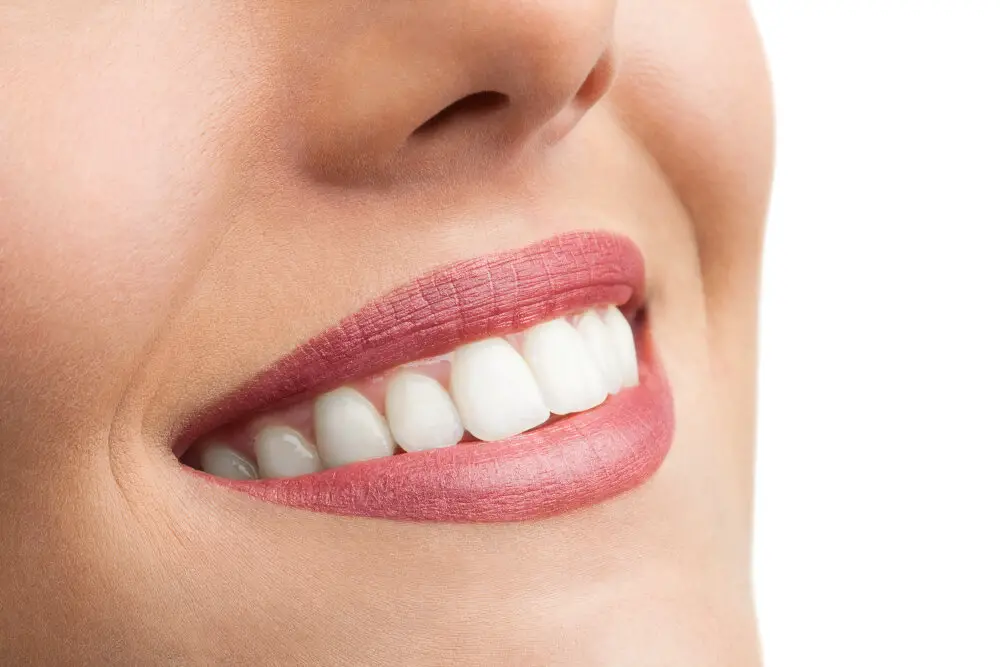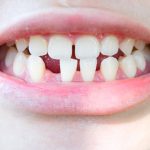Teeth Retainers Cost: How Much Should You Expect to Pay?

Retainers are an essential part of dental care, and they play a vital role in maintaining the alignment of teeth. They are commonly used after orthodontic treatment to ensure that the teeth do not shift back to their original position. However, one of the most common questions that people have is how much they should expect to pay for a teeth retainer. The cost of retainers varies depending on several factors, including the type of retainer, the complexity of the case, and the location of the dental practice. The cost of teeth retainers can range from a few hundred to several thousand dollars. It is essential to understand that the price of the retainer should not be the only factor that determines your choice of orthodontic treatment. The quality of care, experience of the orthodontist, and the type of retainer you need should all be considered when choosing the best treatment for your needs. In this article, we will explore the different types of retainers, the factors that affect the cost of retainers, and how much you should expect to pay for a teeth retainer.
Retainers are orthodontic devices that are used to maintain the position of teeth after braces have been removed. They are custom-made appliances that are made from either plastic or metal wires and are designed to fit the unique shape of a patient’s mouth. Retainers are necessary because after braces are removed, teeth have a tendency to shift back to their original position. This is because the tissues and bones in the mouth are still adjusting to the new position of the teeth. Retainers help to hold the teeth in place until the tissues and bones have fully adjusted. Without retainers, teeth may shift back and undo the results of the orthodontic treatment, which can be both frustrating and costly.
Types of Retainers

Retainers are orthodontic devices used to maintain the position of teeth after braces have been removed. There are two main types of retainers: removable and fixed. Removable retainers, as the name suggests, can be taken out of the mouth for cleaning or eating. They are usually made of clear plastic or acrylic and are custom-made to fit the patient’s teeth. Removable retainers are less expensive than fixed retainers and are typically worn full-time for the first few months after braces are removed, after which they are worn only at night. Fixed retainers, on the other hand, are bonded to the back of the teeth and cannot be removed by the patient. They are made of a thin wire that is attached to the teeth with dental cement. Fixed retainers are more expensive than removable ones but provide a more permanent solution for maintaining the position of teeth. They are typically worn for several years after braces are removed and can be a good option for patients who are prone to forgetting to wear their removable retainers or who have a high risk of teeth shifting. Ultimately, the type of retainer that is right for a patient will depend on their individual needs and budget.
There are different types of retainers available depending on the needs and preferences of the patient. The most common types are the traditional wire and acrylic retainers, which are custom-made to fit the patient’s teeth and hold them in place. Another type is the clear plastic retainer, also known as the Essix retainer, which is designed to be less visible than the wire and acrylic retainer. The Hawley retainer, on the other hand, has a metal wire that goes across the front of the teeth and is held in place by a plastic or acrylic base. Another type is the fixed retainer, which is a wire that is bonded to the back of the teeth to prevent them from shifting. Each type of retainer has its own advantages and disadvantages, and the cost can vary depending on the type and the location of the dental practice.
There are two main types of teeth retainers: fixed and removable. Fixed retainers, also known as bonded retainers, are a small wire that is attached to the back of the teeth and cannot be removed. They are typically used in cases where there has been significant movement of the teeth, and they help to hold them in place. The main advantage of a fixed retainer is that it is always working to keep your teeth in place, and you don’t have to worry about removing it or losing it. However, fixed retainers can be difficult to clean and can sometimes cause irritation to the tongue or cheeks. Removable retainers, on the other hand, are clear plastic trays that fit over your teeth and can be taken out for eating, brushing, and flossing. They are more comfortable than fixed retainers and are easier to clean. However, they require more discipline to wear consistently, and they can be lost or broken if not cared for properly. Ultimately, the choice between fixed and removable retainers will depend on your individual needs and preferences, as well as your orthodontist’s recommendations.
When it comes to teeth retainers, there are a few different types to choose from, each with its own set of benefits and drawbacks. In terms of cost, there can be significant differences between the various options. Traditional wire retainers tend to be the least expensive, with prices starting at around $150. Clear plastic retainers, on the other hand, can be more costly, with prices ranging from $300 to $700 or more depending on the complexity of the case. Lingual retainers, which are placed behind the teeth, can be even pricier, with costs starting at around $500. Overall, the cost of a teeth retainer will depend on a variety of factors, including the type of retainer, the complexity of the case, and the location of the dental practice.
Factors That Affect Retainer Cost

Retainers are orthodontic devices designed to keep teeth in their corrected position post-braces. They are typically made of clear plastic or wire and are worn for several months to prevent teeth from shifting. However, the cost of retainers can be a concern for many people. There are several factors that can affect the cost of retainers. The type of retainer, the length of wear, and the location of the orthodontist can all impact the final cost of treatment. The type of retainer is one of the primary factors that can affect the cost. There are three main types of retainers: Hawley retainers, clear plastic retainers, and fixed retainers. Hawley retainers are made of wire and acrylic and are the most affordable option. Clear plastic retainers are more expensive, but they are also more discreet. Fixed retainers are the most expensive option and are typically only used for specific cases. The length of time that the retainer will be worn can also impact the cost. Longer wear times will require more frequent checkups and adjustments, which can add to the overall cost. Lastly, the location of the orthodontist can also affect the cost. Orthodontists in larger cities or more affluent areas may charge more than those in smaller towns or less affluent areas.
There are several factors that can significantly impact the cost of retainers. Firstly, the type of retainer prescribed by the orthodontist can affect the price. For example, a removable clear plastic retainer may be less expensive than a traditional metal wire retainer. Secondly, the complexity of the patient’s orthodontic treatment can also influence the cost of retainers. More severe cases may require more frequent adjustments and longer treatment time, leading to higher costs. Additionally, the location of the orthodontic practice can play a role in pricing, as practices in urban areas may have higher overhead costs. Lastly, insurance coverage can impact the cost of retainers, as some plans may cover a portion or all of the expenses. Overall, it is important to discuss with your orthodontist the various factors that can affect the cost of retainers and understand the potential expenses before beginning treatment.
When it comes to the cost of teeth retainers, a number of factors can greatly influence the final price. One of the most significant factors is location – the cost of retainers can vary significantly depending on where you live. Additionally, the fees charged by your dentist or orthodontist can also play a role in determining the overall cost. Factors such as the complexity of the treatment plan and the materials used can also impact the fees charged by your dental professional. Finally, insurance coverage can play a major role in determining the final cost of your retainers, with many insurance plans covering at least a portion of the total cost. Overall, the cost of teeth retainers can vary widely depending on a number of different factors, so it’s important to do your research and shop around to find the best deal.
Average Cost of Retainers

Retainers are dental devices that are used to maintain the alignment of teeth after orthodontic treatment. They are custom-made for each patient, and the cost of retainers can vary depending on several factors. The average cost of retainers ranges from $150 to $500 per arch, but this can vary depending on the type of retainer, the materials used, and the complexity of the case. There are several types of retainers available, including Hawley retainers, clear retainers, and fixed retainers. Hawley retainers are the most common type and are made of wires and acrylic. Clear retainers are made of a clear plastic material and are virtually invisible. Fixed retainers are bonded to the teeth and cannot be removed by the patient. The type of retainer recommended by the orthodontist will depend on the individual patient’s needs and preferences. The materials used to make the retainer can also affect the cost, with higher quality materials typically costing more. Additionally, more complex cases may require more extensive treatment and higher costs.
When it comes to teeth retainers, the cost can vary depending on various factors such as the type of retainer, the length of time it needs to be worn, and the location of the dental practice. Generally, the cost range for retainers can be anywhere from $150 to $1,000 or more. A traditional wire retainer can cost around $150 to $300, while clear plastic retainers can be more expensive. Some orthodontic practices may also offer payment plans or financing options to make the cost more manageable. It’s important to consult with your dentist or orthodontist to determine the best type of retainer for your needs and budget.
When it comes to teeth retainers, there are several types available, each with its own cost. The most common types of retainers are Hawley, Essix, and bonded retainers. Hawley retainers are the most traditional type and are made of metal wires and acrylic, which makes them durable and long-lasting. They cost more than Essix retainers, which are made of clear plastic and are almost invisible. Bonded retainers are the most permanent type of retainer and are attached to the back of the teeth with dental cement. The cost of bonded retainers is higher than both Hawley and Essix retainers. Ultimately, the cost of a teeth retainer will depend on the type of retainer chosen, the materials used, and the complexity of the orthodontic treatment. It is important to consult with an orthodontist to determine which type of retainer is best for your specific needs and budget.
Insurance coverage can play a significant role in determining the out-of-pocket costs associated with teeth retainers. Depending on the type of plan one has, insurance coverage may fully or partially cover the cost of retainers. Patients with insurance coverage can benefit from lower out-of-pocket costs as the insurance provider pays for a portion of the total cost. Moreover, the amount of coverage may vary based on different factors such as the type of retainer, frequency of replacement, and the patient’s age. It is important to check with one’s insurance provider to understand the extent of coverage and how it may affect the overall cost of teeth retainers.
How to Save Money on Retainers

Retainers are essential dental devices that help maintain the alignment of teeth after braces have been removed. However, they can be quite expensive, with costs ranging from $300 to $1,000 or more. Fortunately, there are several ways to save money on retainers without compromising quality. One of the best ways to save money on retainers is to shop around for the best deal. Many orthodontic practices offer discounts or payment plans for retainers, so it’s worth calling around to compare prices. Additionally, some online retailers offer custom-fit retainers at a fraction of the cost of those obtained from a traditional orthodontist. While it’s important to be cautious when purchasing retainers online, many reputable retailers offer high-quality products that are comparable in quality and effectiveness to those obtained from an orthodontist. Another way to save money on retainers is to opt for a removable retainer instead of a fixed one. Removable retainers are typically less expensive than fixed retainers and can be easily replaced if lost or damaged. Additionally, some orthodontists offer clear retainers that are virtually invisible, which can be a great option for those who are self-conscious about wearing a retainer. It’s also important to take good care of your retainer to avoid replacement costs. This includes cleaning it regularly and storing it properly when not in use. By being proactive and taking steps to save money on retainers, you can enjoy the benefits of a beautiful, healthy smile without breaking the bank.
Retainers are essential for preserving the alignment of your teeth after orthodontic treatment, but they can also be quite pricey. Fortunately, there are several tips that can help reduce the cost of retainers. One of the most effective ways is to ask your orthodontist if they offer a payment plan or financing options. This can help you spread the cost of your retainer over several months, making it more manageable. Additionally, you can shop around for the best prices and compare quotes from different orthodontic providers. Lastly, taking good care of your retainer can extend its lifespan, thereby reducing the need for frequent replacements. By following these tips, you can save money on retainers and still maintain the health and appearance of your smile.
When it comes to teeth retainers, the cost can vary depending on various factors. Fortunately, there are options for financing or payment plans to help make this investment more manageable. One option is to check with your dental insurance provider to see if they cover any portion of the cost. If not, many orthodontic offices offer in-house financing or payment plans to help spread out the cost over time. Another option is to look into third-party financing companies that specialize in medical expenses. These companies offer loans specifically for dental or orthodontic treatments and usually have flexible payment options. Overall, it’s important to do your research and consider all your options before making a decision on financing or payment for your teeth retainer.
To maximize insurance coverage for teeth retainers, there are a few steps that you can take. Firstly, it is important to understand your insurance plan and what it covers. You should review your policy carefully and check for any exclusions or limitations that may apply. Secondly, you should choose a dentist or orthodontist who is in-network with your insurance provider as this can help lower the cost of treatment. Thirdly, you should consider using a Flexible Spending Account (FSA) or Health Savings Account (HSA) to pay for your retainers as this can provide tax benefits. Finally, make sure to follow your dentist’s instructions for submitting insurance claims and provide all necessary documentation to ensure that you receive the maximum coverage available. By taking these steps, you can help ensure that you receive the best possible insurance coverage for your teeth retainers.
The article \Teeth Retainers Cost: How Much Should You Expect to Pay\ highlights the different factors that can affect the cost of teeth retainers. The article emphasizes that the cost of retainers can vary depending on the type of retainer, the materials used, the location of the dental practice, and the insurance coverage. The article also explains the different types of retainers, including Hawley retainers, Essix retainers, and permanent retainers. Additionally, the article provides a general price range for each type of retainer. Overall, the article encourages individuals to do their research and speak with their dentist to determine the best type of retainer for their needs and budget.
Investing in retainers to maintain dental health is an important aspect of oral hygiene that should not be overlooked. While the cost of retainers may vary depending on the type and quality, the benefits of having a healthy set of teeth are priceless. Retainers help to keep teeth in their correct position and prevent crowding or shifting, which can lead to more serious dental problems. By investing in retainers, you are not only maintaining the appearance of your teeth but also preserving their functionality and health. Retainers are a long-term investment that can save you from costly dental procedures in the future. Therefore, it is essential to prioritize investing in retainers as part of your overall dental care plan.
Conclusion

In conclusion, the cost of teeth retainers varies depending on several factors, such as the type of retainer, the complexity of the case, and the location of the dental practice. While traditional retainers may be more affordable, clear aligner retainers may come with a higher price tag. However, it’s important to remember that the cost of teeth retainers is a small investment compared to the long-term benefits they provide, such as maintaining straight teeth and a healthy bite. Ultimately, it’s best to consult with a trusted dental professional to determine the best retainer option and cost for your individual needs.







